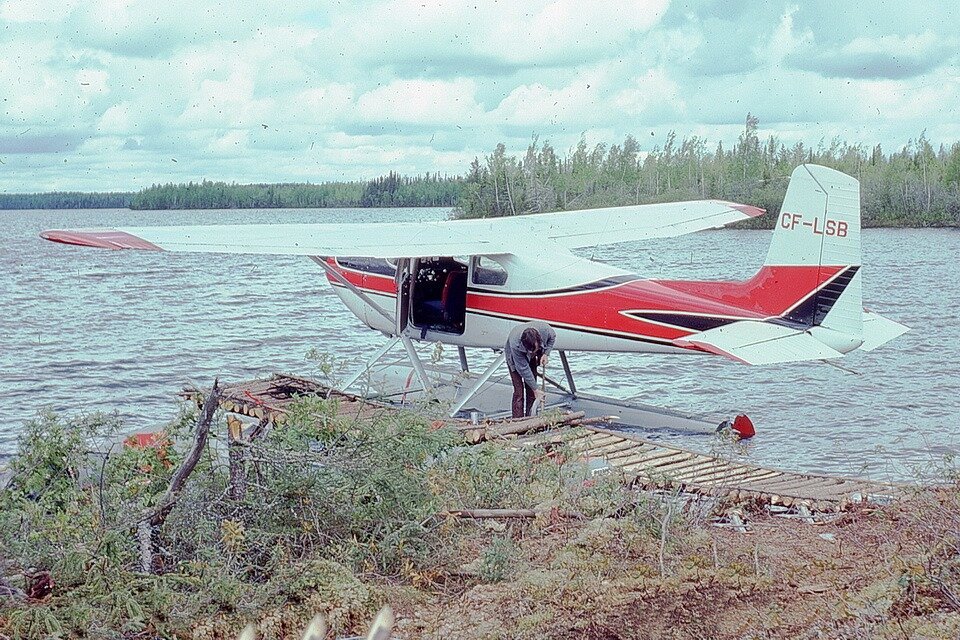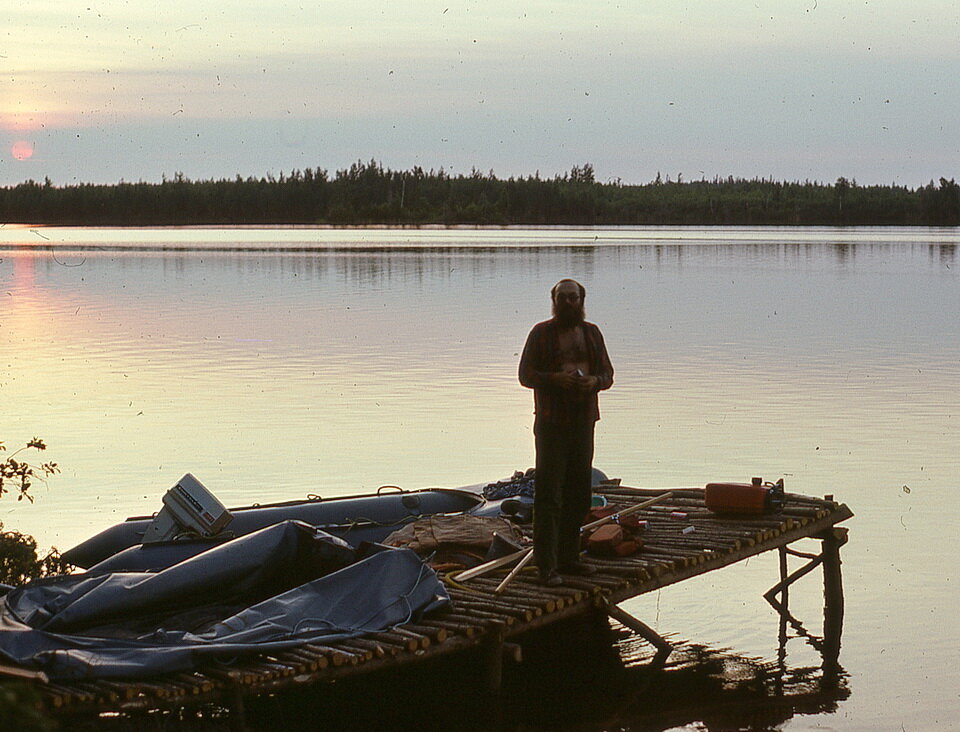Far North Rambles #23: Bush Camp Docks
The bush camp dock is one of the least glamorous, but one of the more important camp assets.
When I worked as a field geologist in the Far North (in my pre-Ontario Geological Survey days), we had several immediate priorities when setting up a remote bush camp: a) establish the communication system; and b) build a dock. Believe it or not, these two required attention BEFORE the privy was built.
We used trees removed to open up the camp site. The design was simple. The end farthest away from shore sometimes was anchored on to a rock-filled square crib, but usually, the elaborate crib was reserved for longer more robust docks. For a quick and dirty dock, we built a square frame on the end farthest away from the shore to support the long trees that formed the dock edge. We always added diagonal cross trees to strengthen the dock. On side, the dock looked like a triangle. Small logs placed horizontally across the edge poles formed the walking surface. We usually added two, vertical legs on both sides at the middle of the dock. The bottom of those legs rested as a foot on the bottom of the lake to support, stabilize, and strengthen the middle of the dock. Sometimes, we had to get into the water to set the dock. That was also an unintentional, and unpleasant, test to see how many bloodsuckers shared the lake waters. Alternatively, we constructed the dock on land and slide it along skinny, log rails into the lake. That practice was a good test of the dock strength. It was also a welcomed technique in early May, just after the ice left the lake, when the water was really cold. Two people could built a dock in 1 to 2 hours. For some lakes, it was necessary to add dock extensions over the summer to reach deeper water as the lake levels dropped.
The dock secured incoming fixed wing aircraft and kept the aircraft floats from rubbing on rocks along the shore (Photo 1).
Photo 1: A typical remote bush camp dock that secured the Cessna food plane. Photo composed on McVicar Lake, summer 1975
Pilots don’t like rocks! The dock also served as the platform to tie up the zodiac boats, to watch sunsets (Photo 2), to fish from, to get away from shore to fill the camp water bucket, and the bathing platform when the water was too cold swim.
Photo 2: John Charleton standing on a remote bush camp dock was used to secure the planes and boats, kept the aircraft floats from rubbing on rocks along the shore, the platform to watch sunsets, to fish from, to get away from shore to fill the camp water bucket, and the bathing platform when the water was too cold swim. Photo composed summer 1976, Cannon Lake, northwestern Ontario.
The bush camp dock is one of the least glamorous, but one of the more important camp assets.
Andy Fyon, Oct 2, 2020 (Facebook, July 3, 2020).
Have A Question About This Note?


